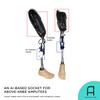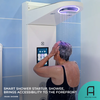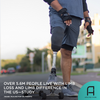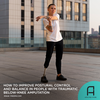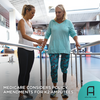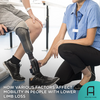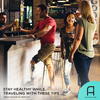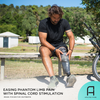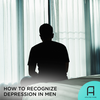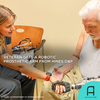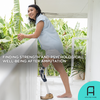Thriving in the Workplace While Living With Limb Loss
Thriving in the workplace as someone living with limb loss and limb difference requires more than ensuring a company’s diversity and inclusion policies and practices; it also requires personal clarity. Having emotional clarity on what you want to accept or not accept from colleagues is essential, especially now when companies focus on becoming more inclusive.

Below, we go through two questions you need to ask yourself regularly.
On accepting help
You need to be clear with yourself if you want to accept help from others or not. Although your answer to this question may change daily, it’s still important to clarify your thoughts on it before you share space with colleagues.
This is because getting help from others can feel stressful, mainly when you haven’t determined the level of assistance you’re comfortable accepting.
It’s best to check in with yourself often. This can help ease the stress of the moment. Even if it’s arbitrary, deciding you will accept help this week can free your mind and emotions to focus on other things.
On helping others and answering questions
The next thing you need personal clarity on is if you want to be a help to others. Chances are high that you will be the only person in the room with first-hand experience with limb difference or limb loss, or disability.
It’s good for your well-being to ask yourself regularly if you’re prepared to share your experience. Are you ready to speak up about what’s acceptable and what true inclusion can look like?
Being a primary resource person requires you to relive your experiences repeatedly, and it can be a stressful event for you. Be clear on what you can and can’t tolerate and how much you want to share. Once you’ve established these with yourself, it’s time to set boundaries with the people around you.
How can companies be genuinely inclusive?
Besides having personal clarity on what you’re willing to share and accept, ensure that your current company or a potential one is genuinely inclusive. The reality is that companies still have a long way to go. At the Amputee Coalition 2022 National Conference, attendees identified ten things companies that want to be genuinely inclusive should have.
First, companies should have a centralized accommodation office. This means providing reasonable workplace accommodation for employees with disabilities as required under the Americans with Disabilities Act (ADA) of 1990.
Second, companies need a department dedicated to inclusion and diversity, which means everyone feels equally involved and supported in all work areas. Ensuring proper execution of inclusion and diversity policies requires dedicated staff.
Third, having flexible work arrangements. For people with limb loss and limb difference (or people with disabilities, in general), having flexibility in the workplace has a significant impact on positive well-being. This gives employees space and freedom to take care of their needs to be better employees with improved creativity, focus, and productivity.
Fourth, sharing statistics on the percentage of employees with disabilities in the company’s external environmental, social, and governance (ESG) report.
Many companies have found that their efforts toward making the workplace diverse and inclusive must be improved. So, the fifth item identified at the conference is that companies need to participate in the Disability Equality Index (DEI), a comprehensive benchmarking tool that helps companies build a roadmap of measurable and tangible actions to achieve disability inclusion and equality.
Sixth, companies need to show support for people with disabilities through social media posts and other external communications. This goes a long way toward educating the public on the needs and unique perspectives of people with disabilities.
Seventh, companies should highlight community outreach efforts, like volunteer work, donations, and sponsorships for the disability community.
Eighth, companies should encourage the formation of Employee Resource Networks (ERN). ERNs are typically led and participated in by employees who share a characteristic. In this case, it could be living with limb loss or limb difference or having a disability in general. These groups support personal or career development and create a safe space for employees. Allies may also be invited to join the ERNs to learn how to help their colleagues better.
Ninth, job listings should include information on requesting accommodation during the hiring process. Furthermore, having accessible interview locations is helpful.
And finally, companies also need to post their job listings on specialized job boards, like askearn.org, that target the disability community.
What do you think of these diversity and inclusion items in the workplace? Is there something that you wanted to add?






























